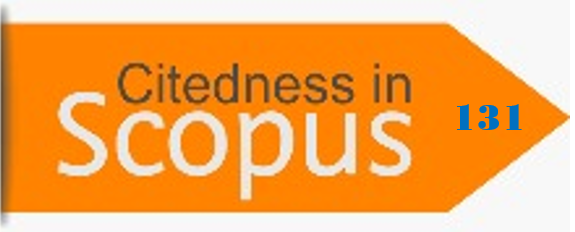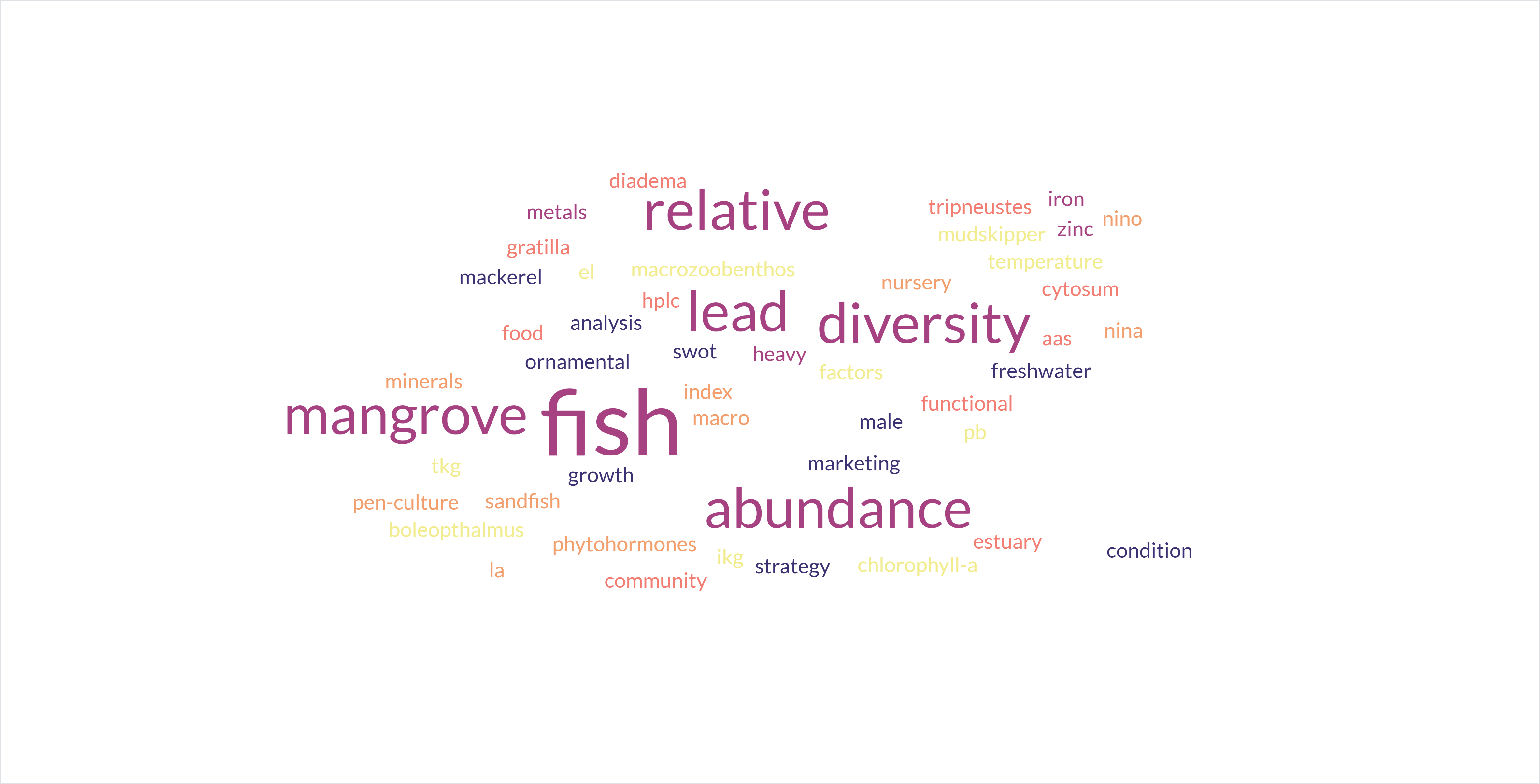Optimisation Of Papain Enzyme Use As An Effort To Increase The Hatching Degree Of Mutiara Catfish (Clarias gariepinus) Eggs
DOI:
https://doi.org/10.35800/jip.v13i1.61097Keywords:
mutiara catfish, hatching rate, papain enzyme, concentration, immersion durationAbstract
This study aims to analyze the effect of commercial papain enzyme with different concentrations and duration of soaking on increasing the degree of hatching of pearl catfish (Clarias gariepinus) eggs. The study used a Randomised Group Design (RAK) with variations in papain enzyme concentration (0, 2, 4, 6, and 8 ppm) and soaking duration (5, 10, and 15 minutes). The results showed that papain enzyme concentration and soaking duration significantly affected the degree of hatching (p < 0,001). The optimal concentration of papain enzyme was 6 ppm with a soaking duration of 10 minutes, resulting in the highest hatching rate of 70,52%±2,92. The lowest egg adhesion was produced at a concentration of 8 ppm with a duration of 15 minutes (32%±4,00), while the highest degree of fertilization was directed at a concentration of 6 ppm with a duration of 10 minutes (79%±3,61). The measurement results of water quality parameters are: temperature 25,6-26,4°C, pH 7,12-7,47, and dissolved oxygen 4,06-4,41 ppm. These results indicate that the papain enzyme effectively reduces egg adhesion and increases the hatching rate of pearl catfish eggs.
Keywords: mutiara catfish; papain enzyme; hatching rate; concentration; immersion duration.
Abstrak
Penelitian ini bertujuan untuk menganalisis pengaruh enzim papain komersial dengan konsentrasi dan durasi perendaman yang berbeda terhadap peningkatan derajat penetasan telur ikan lele mutiara (Clarias gariepinus). Penelitian menggunakan Rancangan Acak Kelompok (RAK) dengan variasi konsentrasi enzim papain (0, 2, 4, 6 dan 8 ppm) dan durasi perendaman (5, 10 dan 15 menit). Hasil penelitian menunjukkan bahwa konsentrasi enzim papain dan durasi perendaman berpengaruh signifikan (p <0,001) terhadap derajat penetasan. Konsentrasi optimal enzim papain adalah 6 ppm dengan durasi perendaman 10 menit, menghasilkan derajat penetasan tertinggi sebesar 70,52%±2,92. Daya rekat telur terendah dihasilkan pada konsentrasi 8 ppm dengan durasi 15 menit (32%±4,00), sedangkan derajat pembuahan tertinggi dihasilkan pada konsentrasi 6 ppm dengan durasi 10 menit (79%±3,61). Hasil pengukuran parameter kualitas air yaitu: suhu 25,6–26,4°C, pH 7,12–7,47 dan oksigen terlarut 4,06–4,41 ppm. Hasil ini menunjukkan bahwa enzim papain efektif mengurangi daya rekat telur dan meningkatkan derajat penetasan telur ikan lele mutiara.
Kata kunci: ikan lele mutiara; enzim papain; derajat penetasan; konsentrasi; durasi perendaman
References
Amelia, R., Supendi, A., Novita, M.Z. (2024). Penerapan Green Water System (GWS) terhadap Hatching Rate Telur Ikan Lele Sangkuriang (Clarias gariepinus). Manfish: Jurnal Ilmiah Perikanan Dan Peternakan, 2: 124–132.
Ardat, Muh.A., Wulandari, Z., Arief, I.I. (2022). Efektivitas konsentrat papain bubuk, getah pepaya segar, dan papain komersial sebagai koagulan dalam pembuatan Dangke. Jurnal Ilmu Pertanian Indonesia, 27: 620–626.
Billah, A. (2024). Pemanfaatan ekstrak daun pepaya (Carica papaya L) terhadap daya tetas telur dan kelangsungan hidup larva ikan tawes (Barbonymus gonionotus). Jurnal Kelautan dan Perikanan Indonesia, 4: 107–113.
Buwono, I.D., Iskandar, I., Grandiosa, R. (2021). Sosialisasi budidaya ikan lele mutiara Padjadjaran di kelompok peternak lele Cileunyi. Dharmakarya, 10: 273.
Díaz, I., Martinez, M. (2013). Plant C1A Cysteine Peptidases in Germination and Senescence. Handbook of Proteolytic Enzymes. Elsevier Ltd, pp. 1852–1858.
Fersht, A. (1985). Enzyme Structure and Mechanism. W.H. Freeman, New York, 1–475 pp.
Al Hazzaa, R., Hussein, A. (2003). Stickiness Elimination of Himri Barbel (Barbus lutes, Heckel) Eggs. Turkish Journal of Fisheries and Aquatic Sciences, 3.
Iswanto, B., Imron, Huria Marnis, Rommy Suprapto. (2022). Petunjuk Teknis Budidaya Ikan Lele Mutiara. 1st ed. 1–57 pp.
Mahendra, R., Susilowati, T., Prayitno, S.B. (2022). Pengaruh perendaman ekstrak daun pepaya (Carica papaya L.) terhadap daya tetas telur ikan bandeng (Chanos chanos). Sains Akuakultur Tropis: Indonesian Journal of Tropical Aquaculture, 7: 45–55.
Marimuthu, K., Palaniandya, H., Muchlisin, Z.A. (2019). Effect of different water pH on hatching and survival rates of African catfish Clarias gariepinus (Pisces: Clariidae). Aceh Journal of Animal Science, 4: 80–88.
Nuzlia, C., Muhsinin, A., Dewi, C.D. (2024). Effect of carica papaya leaf extract toward hatching and survival rate of nilem fish (Osteochilus hasselti) larvae. BIO Web of Conferences. EDP Sciences.
Rahayu, R.N. (2015). Pengaruh Perbedaan Lama Perendaman Telur Ikan Lele Dumbo (Clarias Sp.) Dalam Larutan Teh Hitam Terhadap Keberhasilan Penetasan. Universitas Brawijaya, Malang.
Rahmi, N.I.S., Hidayat, R. (2018). Efektivitas rendaman serbuk biji pepaya (Carica papaya L) terhadap tingkat infeksi jamur saprolegnia sp dan daya tetas telur ikan komet (Carassius auratus). OCTOPUS: JURNAL ILMU PERIKANAN, 7: 747–756.
Reynalte-Tataje, D.A., Baldisserotto, B., Zaniboni-Filho, E. (2015). The effect of water pH on the incubation and larviculture of curimbatá Prochilodus lineatus (Valenciennes, 1837)(Characiformes: Prochilodontidae). Neotropical Ichthyology, 13: 179–186.
Saptiani, G., Hardi, E., Pebrianto, C., Agustina, A. (2016). Ekstrak daun pepaya dan kangkung untuk meningkatkan daya tetas telur dan kelangsungan hidup larva lele. Jurnal Veteriner, 17: 285–291.
Saputra, I.S., Raharjo, E.I., Rachimi. (2014). Pengaruh getah pepaya (Carica papaya L.) kering terhadap derajat pembuahan dan penetasan telur ikan jambal siam (Pangasius hypothalamus). JURNAL RUAYA, 3.
Saputry, A.M., Latuconsina, H., Lisminingsih, R.D. (2023). Pengaruh ekstrak daun pepaya (Carica papaya L) dengan konsentrasi berbeda terhadap daya tetas telur ikan nila (Oreochromis niloticus). Akuatikisle: Jurnal Akuakultur, Pesisir dan Pulau-Pulau Kecil, 7: 113–116.
Slembrouck, J., Komarudin, O., Legendre, M. (2005). Petunjuk teknis pembenihan ikan patin Indonesia, Pangasius djambal. Badan Riset Kelautan dan Perikanan. Jakarta.
Sumarlan, S.H., Wibisono, Y., Hawa, L.C., Nurwindi, L.L. (2017). Pengaruh penambahan enzim papain komersial dalam pembuatan hidrolisat protein dari limbah cair surimi. Journal of Tropical Agricultural Engineering and Biosystems-Jurnal Keteknikan Pertanian Tropis dan Biosistem, 5: 56–65.
Sumarlin, L.O., Nurbayti, S., Fauziah, S. (2011). Penghambatan Enzim Pemecah Protein (Enzim Papain) Oleh Ekstrak Rokok, Minuman Beralkohol Dan Kopi Secara in Vitro. Jurnal Kimia Valensi, 2.
Tahya, A.M., Tobigo, D.T., Yusuf, S.R., Putri, A.R. (2022). Pengaruh ekstrak daun kemangi (Ocimum basilicum L.) terhadap daya tetas telur ikan lele mutiara (Clarias gariepinus) yang terserang jamur. Jurnal Ilmiah AgriSains, 23: 11–19.
Tumanggor, F.J.M., Suriansyah, Tantulo, U., Yasin, M.N., Wirabakti, M.C. (2023). Efektivitas lama perendaman telur ikan lele sangkuriang (Clarias gariepinus) yang terbuahi pada ekstrak daun pepaya terhadap daya tetas telur. JOURNAL OF TROPICAL FISHERIES, 18: 22–29.
Woynarovich, E., Horváth, L. (1980). The Artificial Propagation of Warm-Water Finfishes: A Manual for Extension. FAO Fisheries Technical Paper No.201, Rome - Italy, 1–192 pp.
Yohanes, E.A.A., Jumiati, J., Rahmaningsih, S. (2022). Penggunaan media perendaman dari daun kelor (Moringa oleifera L.) dengan konsentrasi yang berbeda terhadap daya rekat dan daya tetas ikan lele mutiara (Clarias gariepinus). Jurnal Miyang: Ronggolawe Fisheries and Marine Science Journal, 2: 1–6.
Yonarta, D., Selviana, I., Tanbiyaskur, T., Sari, D.I. (2023). Use of Different Dosages of Gonadotrophine Hormones for Java Combtail (Belontia hasselti) Spawning Semi Naturally. Jurnal Akuakultur Sungai dan Danau, 8: 176–180.
Yustiati, A., Shaqina, F.A., Sunarto, S., Rosidah, R., Cahyadi, U., Supriatna, T. (2022). Penggunaan larutan teh hitam untuk menurunkan daya rekat telur ikan lele sangkuriang (Clarias gariepinus). Akuatika Indonesia, 6: 44.
Downloads
Published
How to Cite
Issue
Section
License
Copyright (c) 2025 Martua Pinondang Simangunsong, Hariyani Sambali, M.Sc, Henneke Pangkey, Jeffrie Fredrik Mokolensang, Novie Pankie Lukas Pangemanan, Deiske Adeliene Sumilat

This work is licensed under a Creative Commons Attribution-NonCommercial 4.0 International License.
COPYRIGHT
Authors who publish with this journal agree to the following terms:
Authors hold their copyright and grant this journal the privilege of first publication, with the work simultaneously licensed under a Creative Commons Attribution License that permits others to impart the work with an acknowledgment of the work's origin and initial publication by this journal.
Authors can enter into separate or additional contractual arrangements for the non-exclusive distribution of the journal's published version of the work (for example, post it to an institutional repository or publish it in a book), with an acknowledgment of its underlying publication in this journal.
Authors are permitted and encouraged to post their work online (for example, in institutional repositories or on their website) as it can lead to productive exchanges, as well as earlier and greater citation of the published work (See The Effect of Open Access).



















